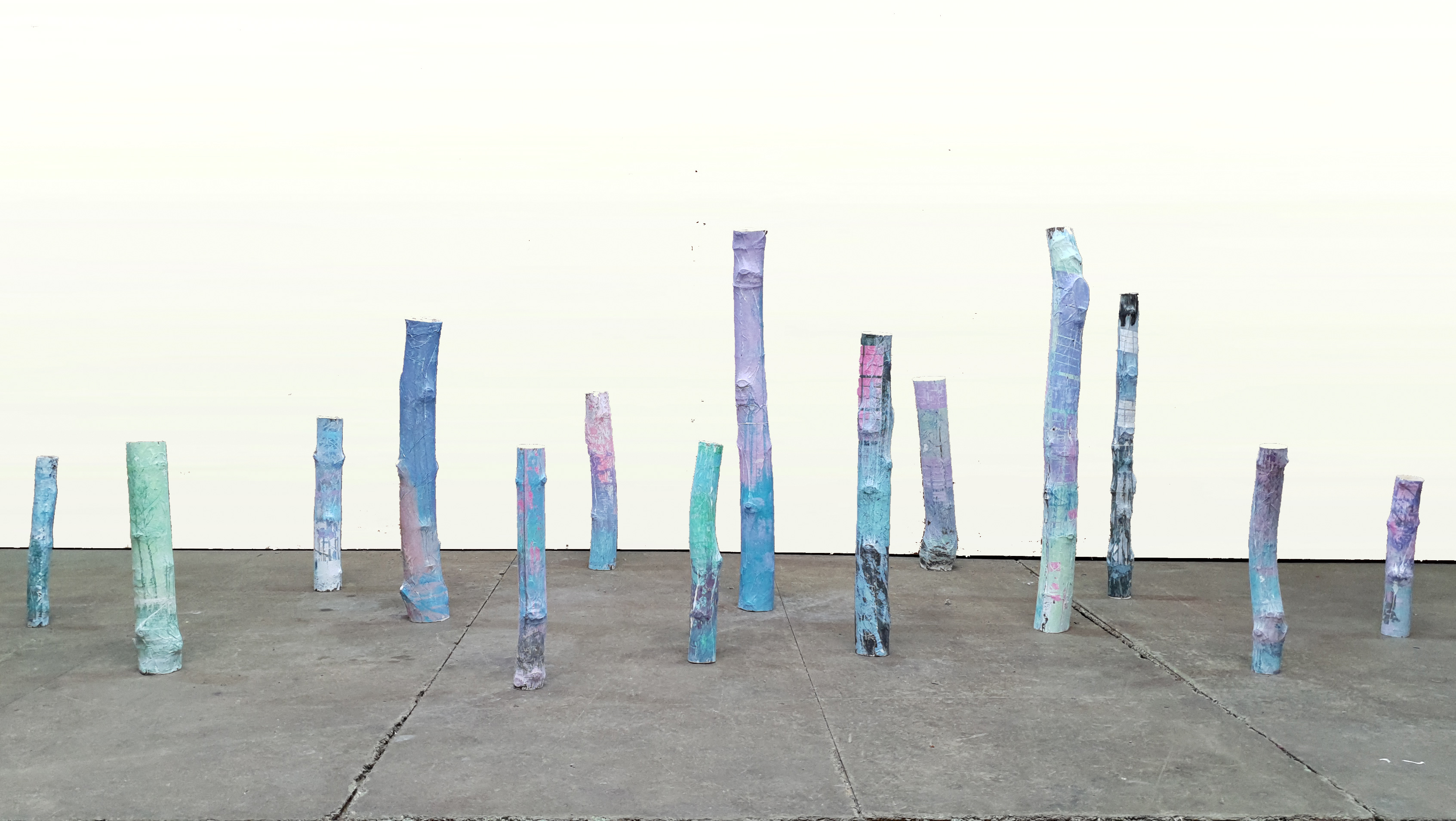
Fred Robeson
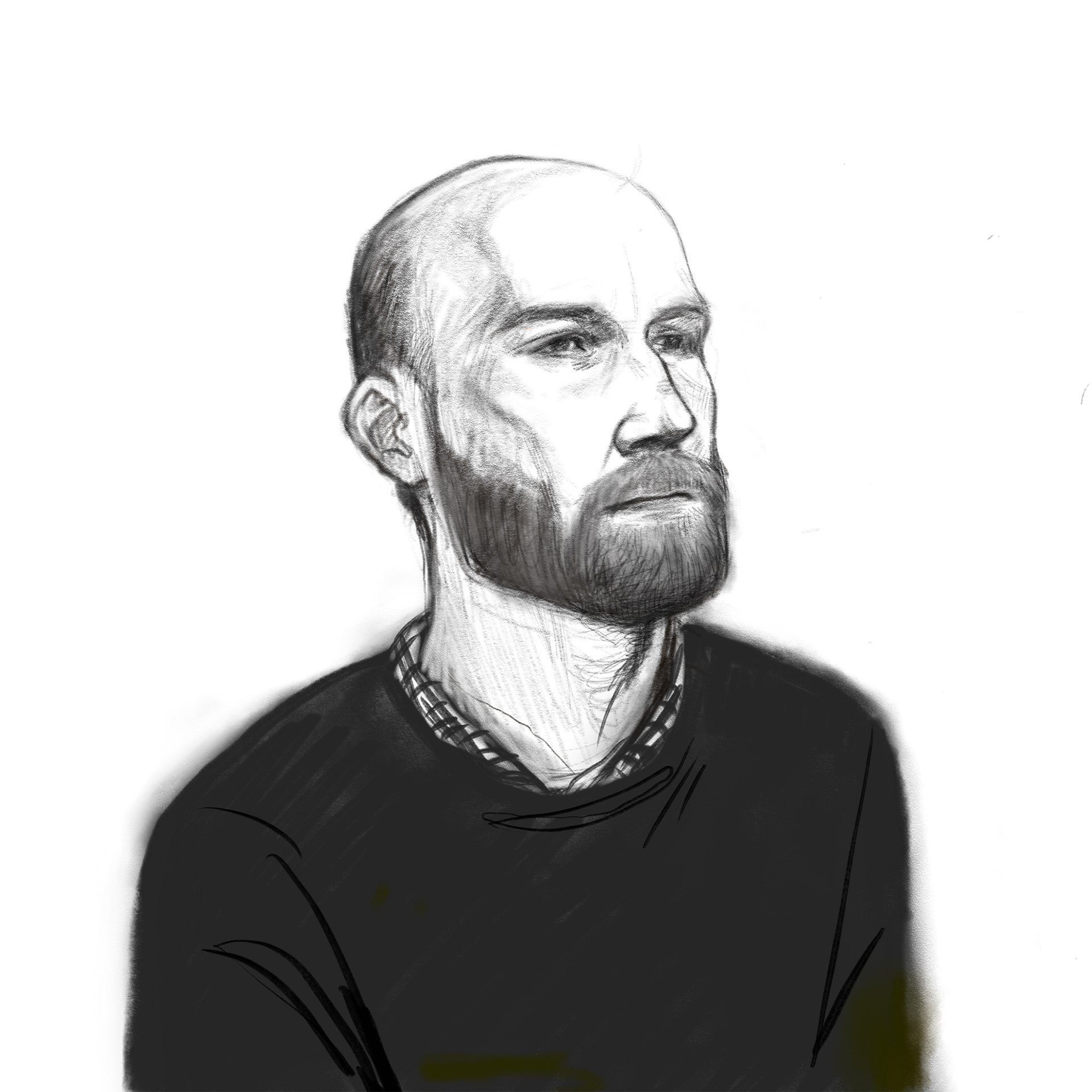
Jeroen van Dooren
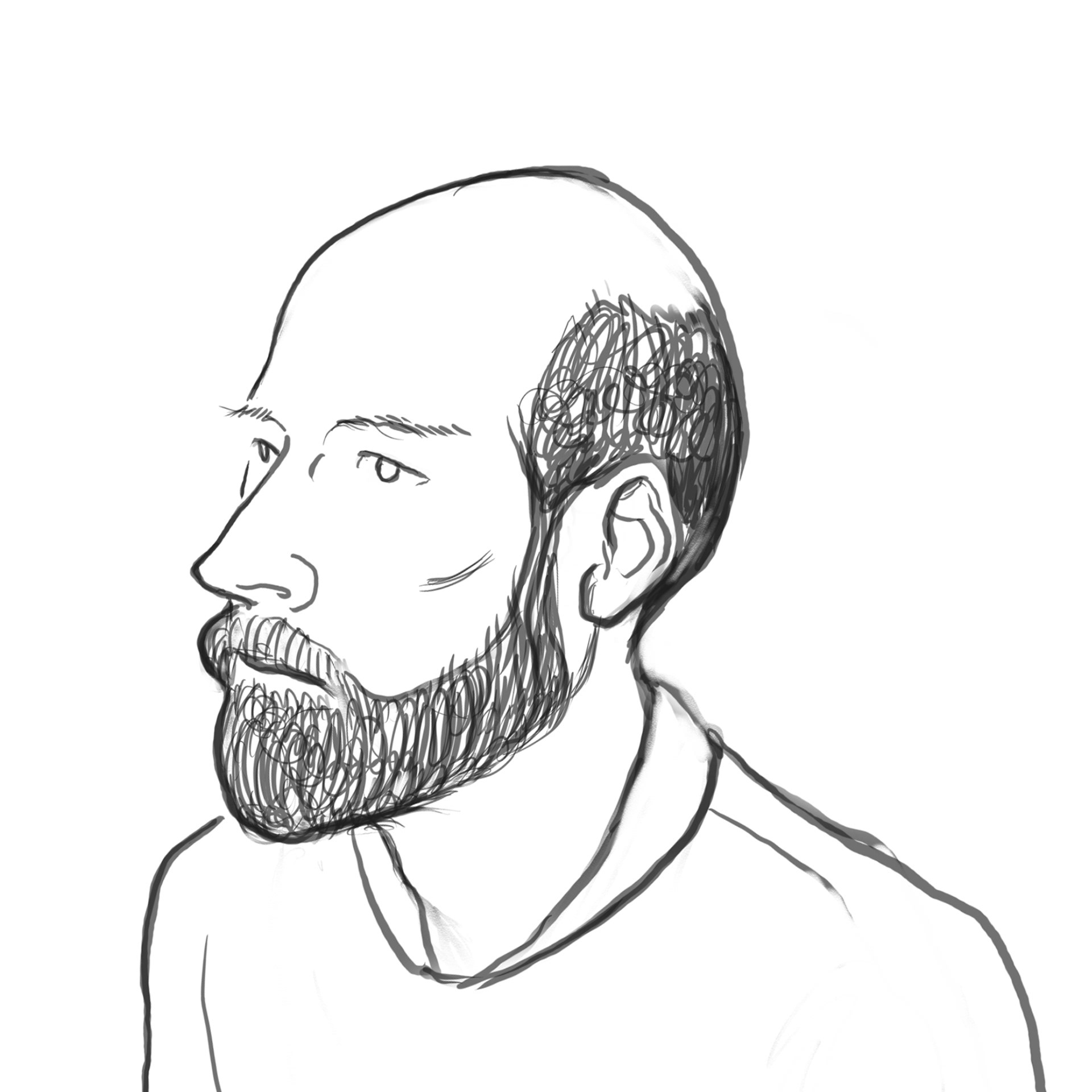
Kees van Lankveld
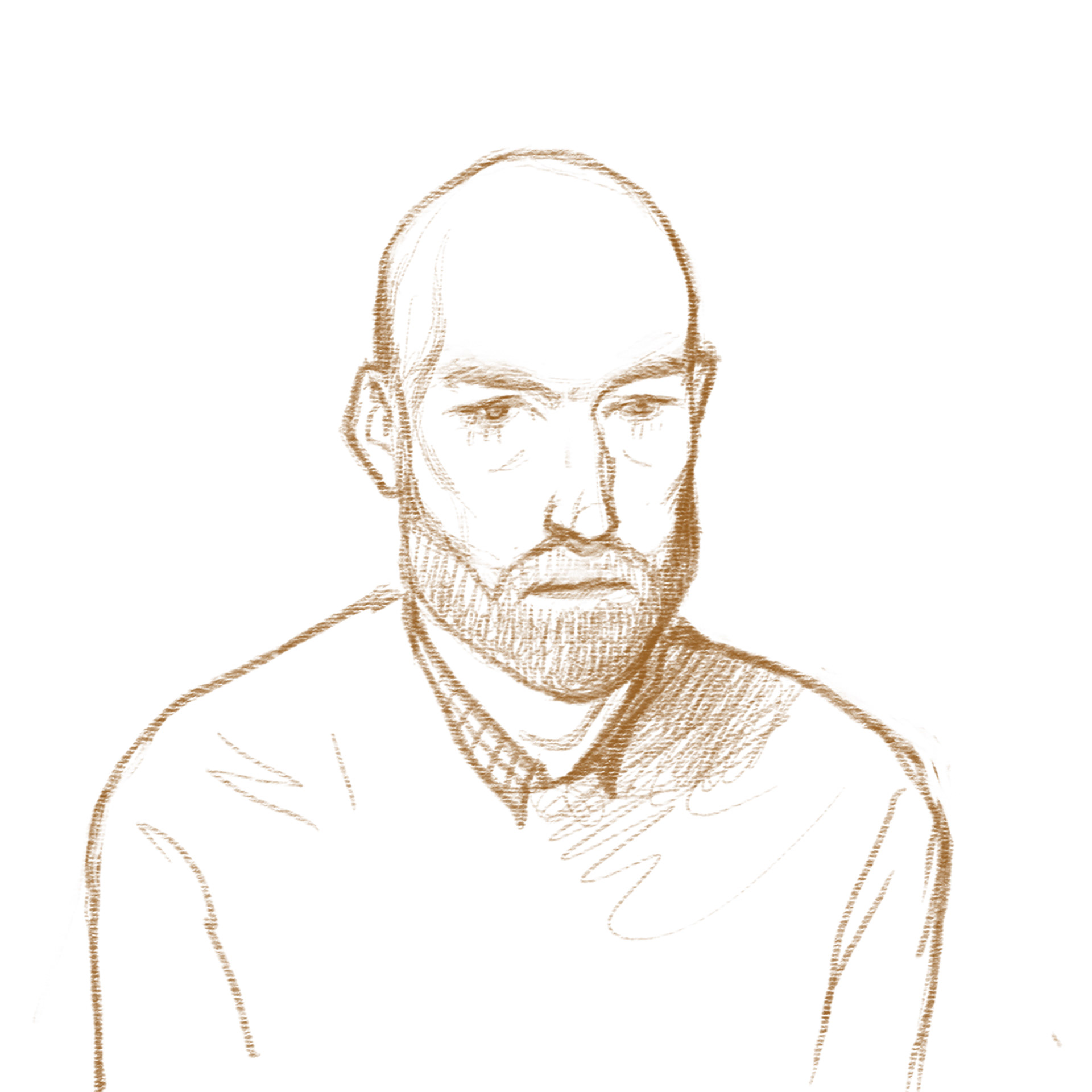
Tom Singer
Fred Robeson Jeroen van Dooren
portrait DRAWINGS bY lISA cHANG lEE 30 X 20CM
Kees van Lankveld Tom Singer
Jeroen’s ongoing project is enquiring contemporary notions of subjectivity, performativity and the role of the contemporary artist.
Through the making of multiple selves and personas.How does the adaptation of the literary concept of the heteronym from fictional writing to contemporary art practice affect the artist’s identity and resulting narratives? A heteronym refers to one or more imaginary character(s) created by a writer to write in different styles or to write from a different perspective. What does it mean to create and embody a fictional artist who is separate from the self, and how does this alter our perceptions of selfhood? Jeroen van Dooren brings together the literary concept of the heteronym, contemporary art, fictional writing and considerations of the relationship between the self and other, originating from a personal experience of mental health issues relating to divided subjectivities. In his work he creates fictional worlds within contemporary art in order to offer a new perspective into the relations between heteronyms, transparency, fiction and the presentations of the self in everyday life and art.
The use of the idea of heteronyms within Jeroen’s work and research offers a way to investigate working from a multitude of different perspectives and personal narrations. It is also a form of depersonalisation and simulation, moving from the self to the other and back again. In doing so, his work understands how the heteronym can function within contemporary art. Autobiografictional characters are invented, their personas are assumed and artworks are produced according to their own separate voices and ways of being. Making work as the fictional personas, these characters come alive via performances, text and audio pieces. The fictional characters are not there as a tool for hiding or for masking but are used as an instrument to investigate character development and the potential for multiple artistic personas within contemporary art.
We are not ourselves all of the time and we are not all of ourselves at any time 2 (2020)
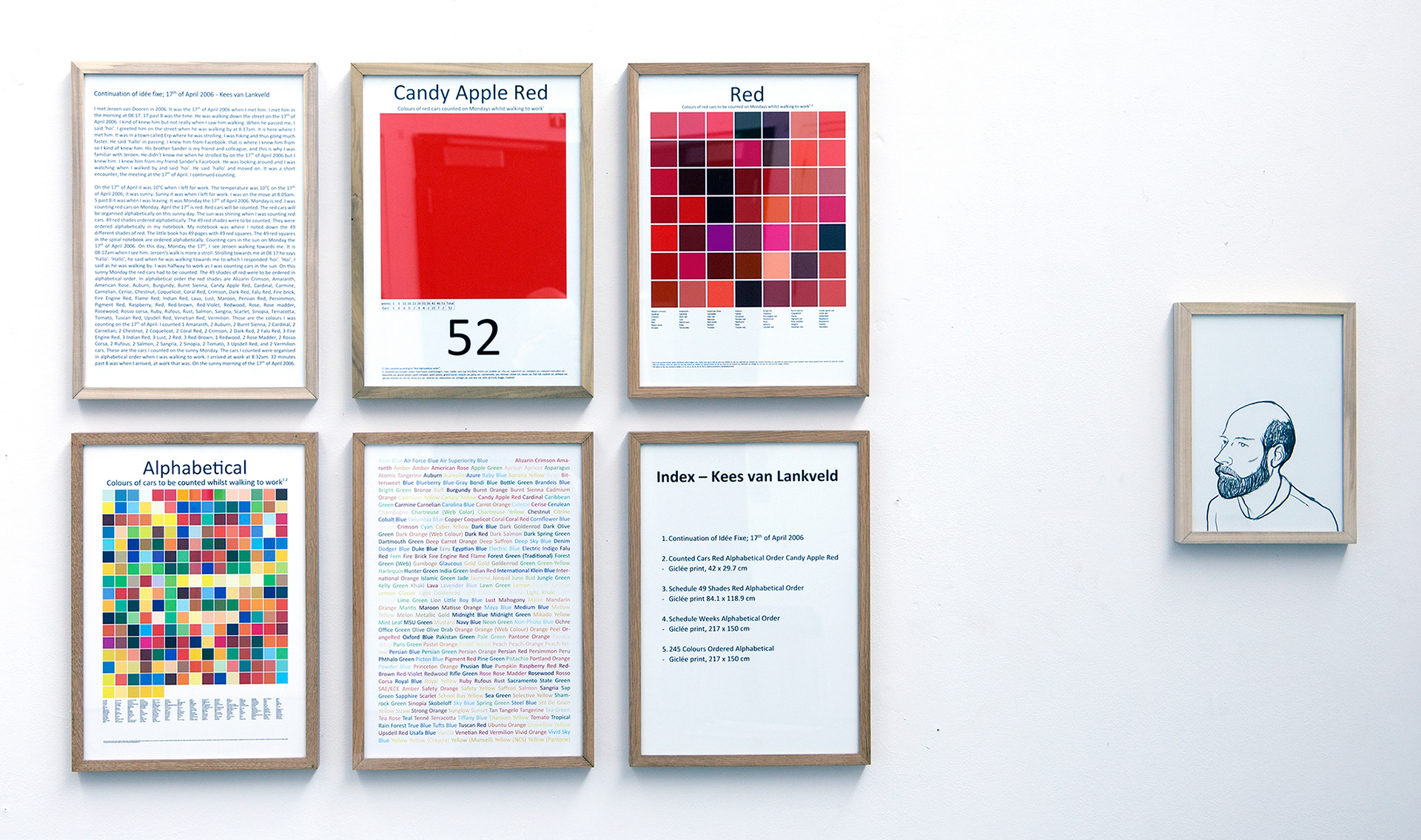
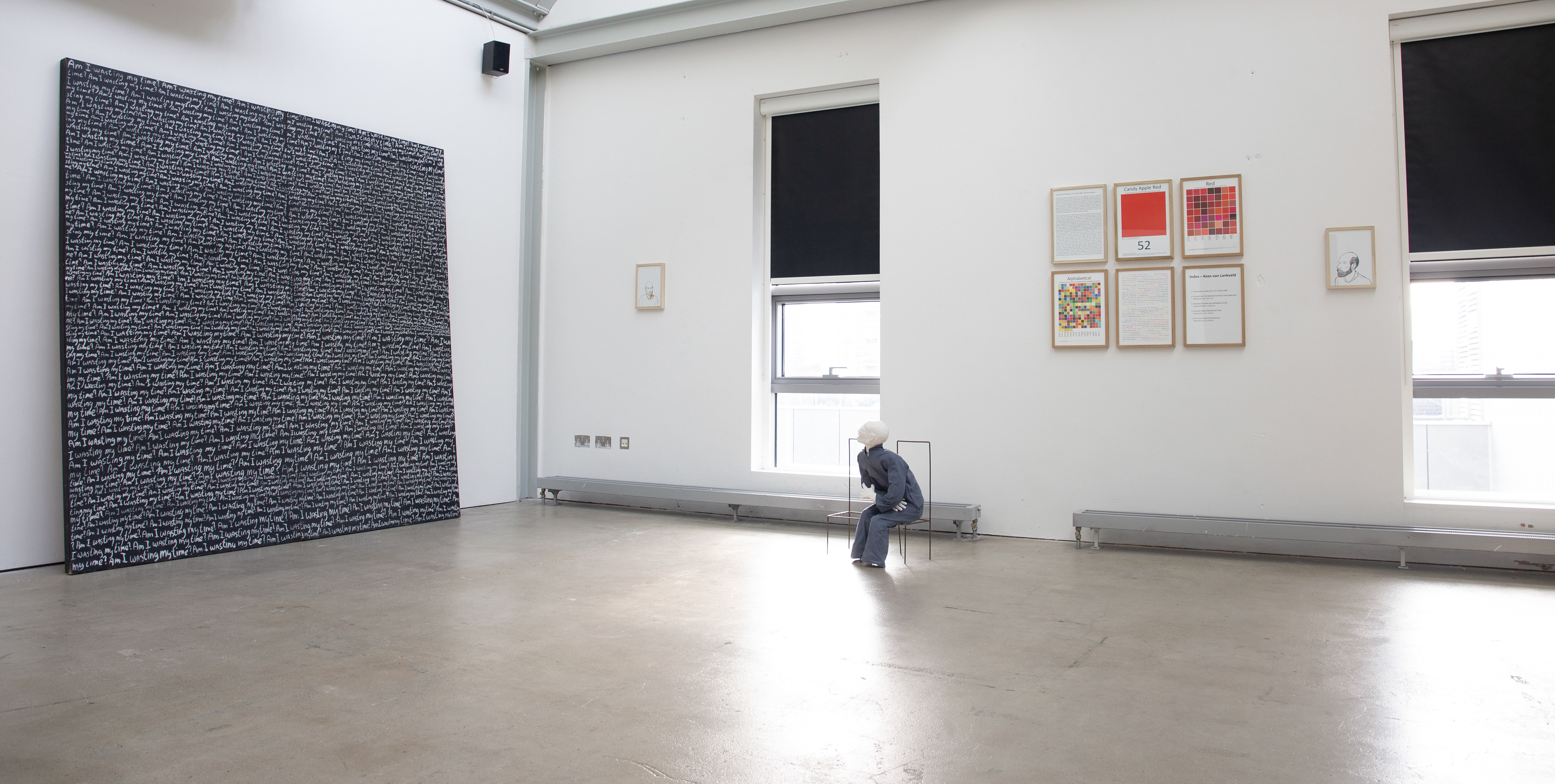
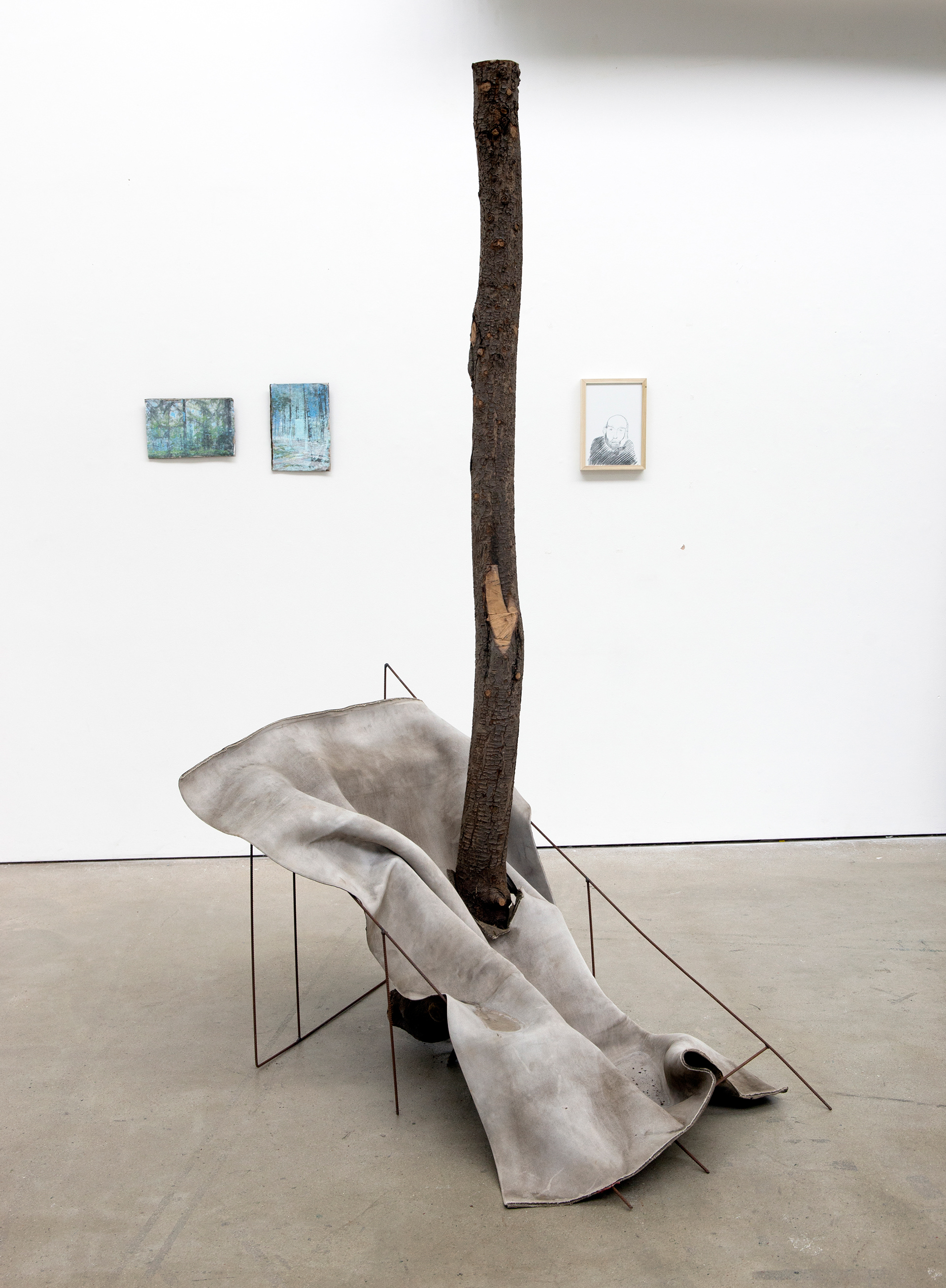
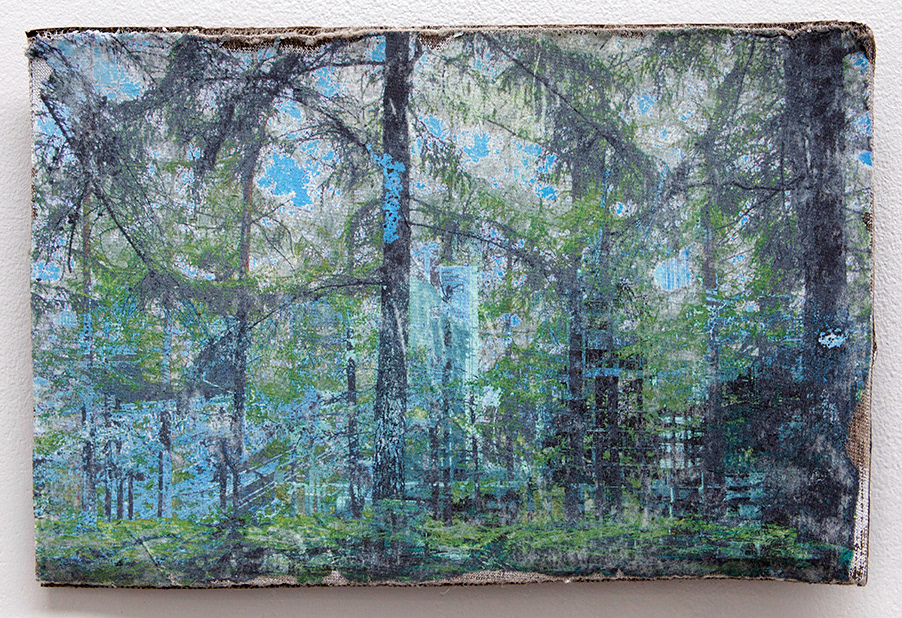
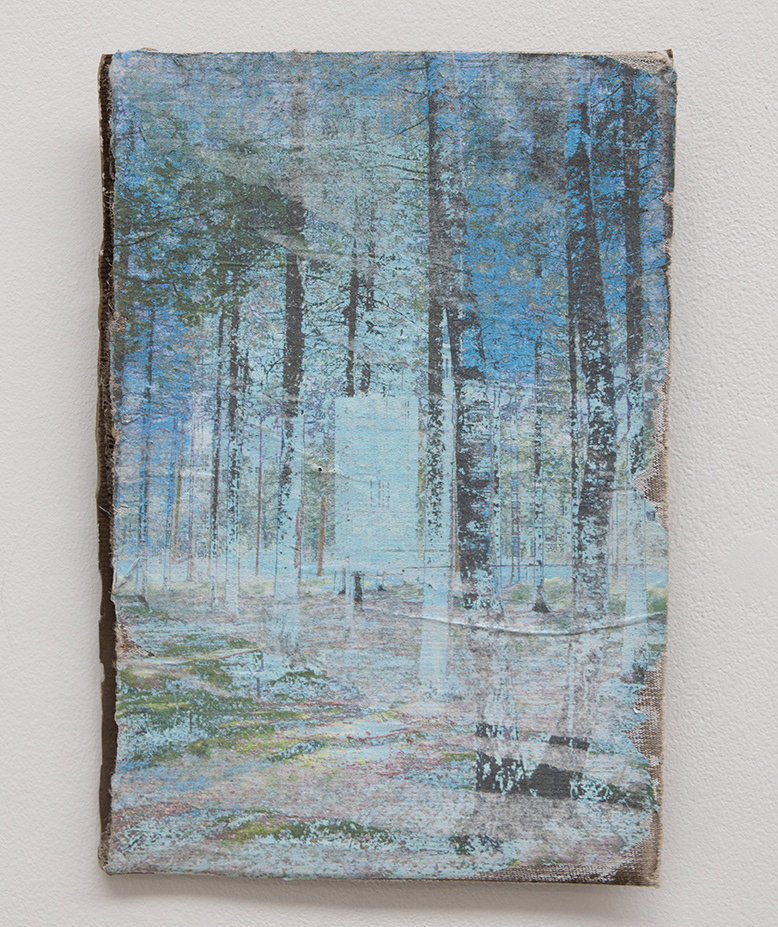
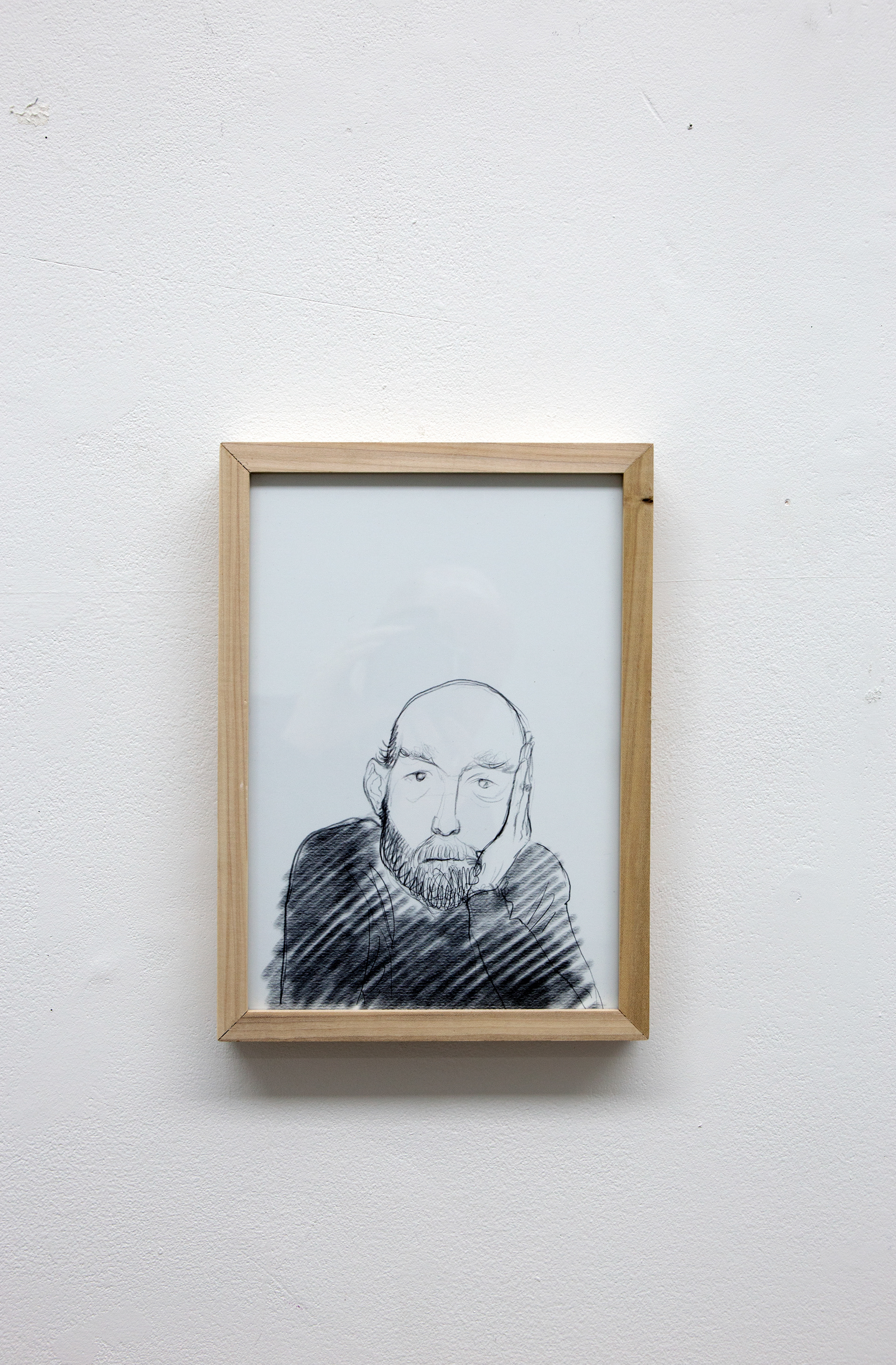
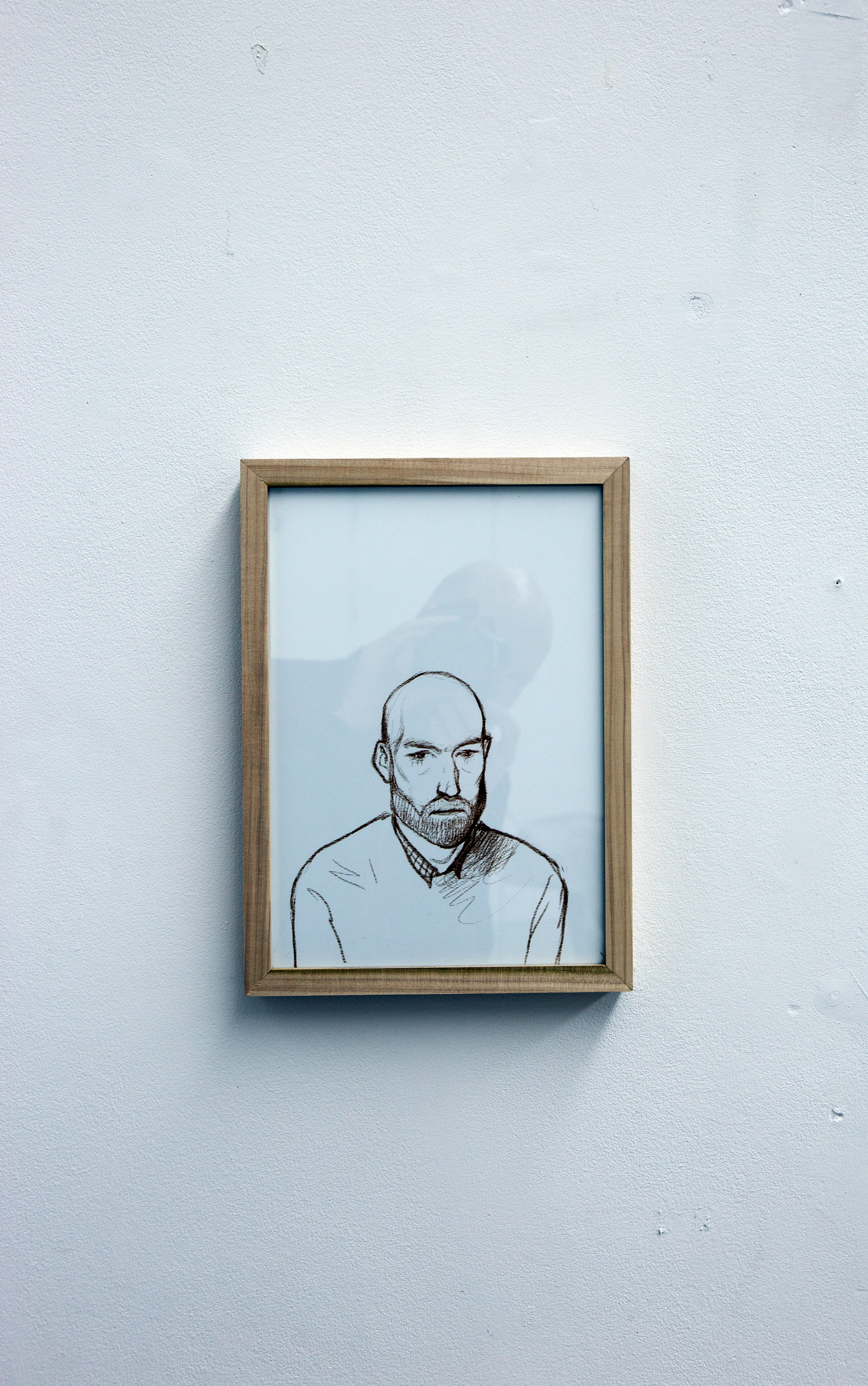
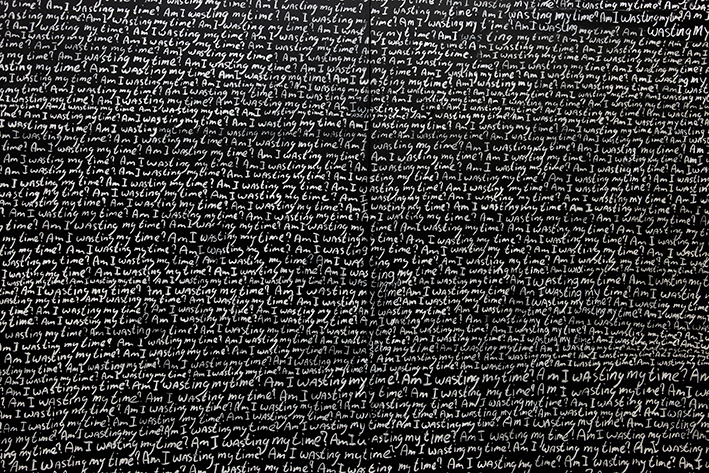
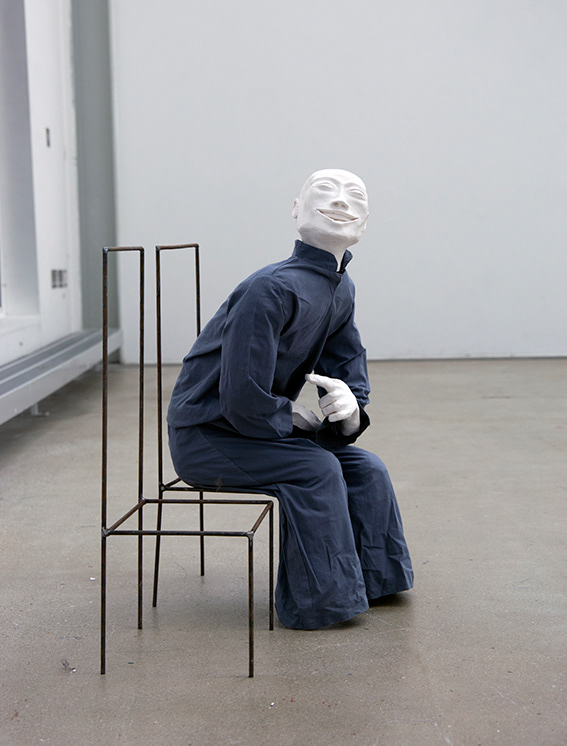
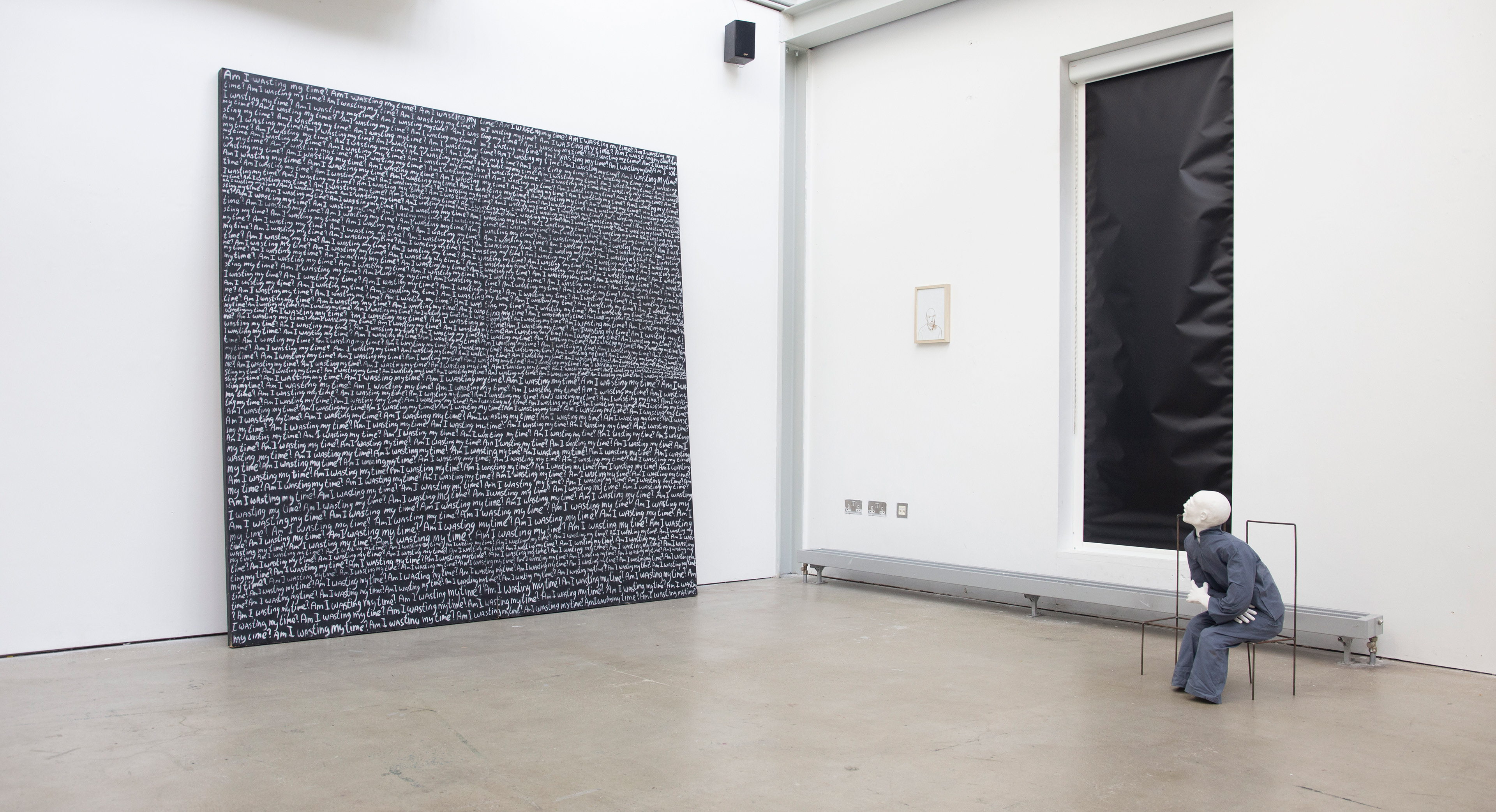
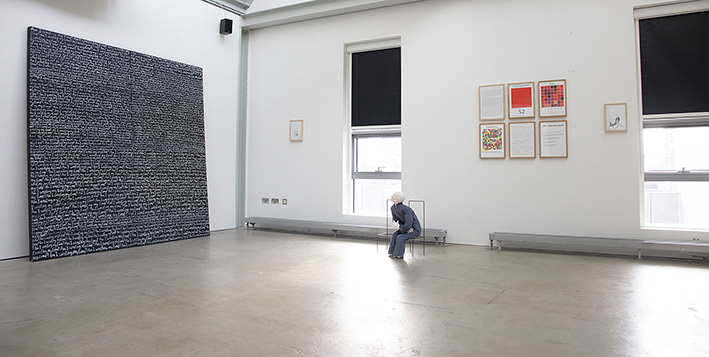
My VIVA presentation, We Are Not Ourselves All Of The Time And We Are Not All Of Ourselves At Any Time 2, aimed to bring together 3 of my heteronyms. Fred Robeson (works with tree trunks, concrete canvas and image transfers), Tom Singer (chalkboard and little man with chairs) and Kees van Lankveld (square colour works). I brought together the different characters with 3 different portraits of them, which were representations of myself. The portraits functioned as the openness of my practice. The not hiding behind a mask but the revealing of me through the characters.
The genesis of my heteronyms are my mental health problems and my readings of Fernando Pessoa. My work is not about my mental health problems, though. To move away from this idea, I invented the orthonym Jeroen van Dooren. This orthonym is there to create a distinction between my inner world and a framework of reality. In my inner world the orthonym Jeroen van Dooren has conversations with the heteronyms: these conversations are fictional conversations, as if writing a book. They live in the same fictional world so as to be able to have these conversations. I, Jeroen van Dooren, can’t have these conversations – there the heteronyms are fictional. The framework of reality is the external expression of the heteronyms and the orthonym. In this framework the orthonym and heteronym again live on the same stage where the heteronyms make artworks and the orthonym can have conversations with them.
This world of others, orthonym and heteronyms, created a narrative separated from the self. When entering their world as the orthonym I am away from the self. This is not a physical change, though; it all happens in my inner world. It is an inner world I occupy, as if in a dreamlike state. This inner world forms itself, depending on the mood I am in, at that specific moment, and this is also how my characters come to life. When I create a character, it is this moment that I relive over and over again until it becomes a person. Once it has become a character, I recreate the mood in my head and start to think what kind of art it would make and start to write down ideas and make sketches. This process can happen very quickly when I have a clear idea of the character, but it can also take years to become a work. There is also the possibility that it will never become anything, in which case the character fails. The longer I work with a specific character the more natural it becomes to make art like them.
Crucial to the work created by my heteronyms and orthonym was my input as an artist. This was relatively new when I started my PhD, and became a big part of my research. The input was me talking about them. I became the author and narrator of their lives. This was an invitation to the fine art audience to become part of the work and also became a method of developing the heteronyms. Before the introduction of me in relation to their work, the characters were mainly introduced through indirect characterisation. The character of the heteronyms was mostly brought to light through the works made by the heteronyms. There it wasn’t clear to the audience that the works reflected a fictional character’s persona: the whole idea of working with heteronyms became more similar to working with pseudonyms. The direct and indirect characterisation by me about the characters invites the public into the fictional world I am creating. During my PhD I became more aware, through the making of work and through fictional writing, of how to portray my heteronyms and to give them specific voices.
It is not only the heteronyms that acquired specific voices during this research; it was also my position, my voice, in regard to the heteronyms which was of importance. By positioning me as a narrator of the work I dissociated myself from the heteronyms. It is this interplay between the self and them which gives me the possibility of showing how the characters develop over time. Pessoa’s words helped me to let go of trying to rationalise everything in my work and thinking in order to focus on what it was that I was attempting to communicate with an audience. This openness is what has changed my perspective on my practice: it was the catalyst for this research and remains at its core. This openness is what needs to happen to succeed in this research: the acceptance of my mental health issues as the basis of my practice and the change in presenting the heteronyms as part of my practice. Instead of hiding behind them, they are an essential component of my research.
We are not ourselves all of the time and we are not all of ourselves at any time (2019)
In We Are Not Ourselves All of the Time and We Are Not All of Ourselves at Any Time I started experimenting with curating multiple characters in one performance. The scripted performance took thirty minutes and had a total of five performers in it. The characters Kees van Lankveld, Will Finch and Pasithea Knijnt participated. The performance was timed around Kees van Lankveld’s performance. Kees’s performance was me and him together. It was moving from him to me and back. The autobiographical stories based on my own experiences were fictionalised into Kees’s biography. They were my voice telling Kees’s life. On each side of the room one of Kees van Lankveld’s works dealing with his obsession of counting cars hung from the ceiling. The performance took place in the space between the 2 prints
This performance was not only designed to deal with the curating of different performers and the dealing with the expressions of the heteronyms' state of minds. The aim was to bring the work from a personal consideration to something understood as a more general or political interpretation.
Played by Jeroen van Dooren, Kees told five biographical short stories in which he talked about his anxieties and mental health problems. He discussed what triggered these and how they influenced his life. Each short story was followed by orating forty-nine shades of a certain colour. He used these colours to organise the cars he counted whilst walking to work. The colours are divided into the red shades he counted on Mondays, the orange shades he counted on Tuesdays, the yellow shades he counted on Wednesdays, the green shades he counted on Thursdays and the blue shades he counted on Fridays. The two different narratives came together in the final biographical story. The prints and the articulation of colours were indirect ways of introducing Kees.
Three performers, Hana Hallauer, Lisa Chang Lee and Nelson Holtz, donned masks and played a group of rabbits in order to embody the character of Pasithea Knijnt. The rabbits represent the constant struggle to try and create some kind of unity and silence in my mind. This group of rabbits exists in the space between a figment of my imagination and a hallucination. During the performance the three rabbits danced or jumped around or followed Kees.
Pasithea Knijnt in this performance was also a more general feel of distraction every one of us feel from day to day. Emails, social media, the news and anything on the internet are interrupting our daily life more and more. Pasithea represented this and interrupted Kees’s performance. The performers came onto the stage at different times increasing the interruption to Kees and crowding the performance area. This to symbolise the increasing distractions in our lives.
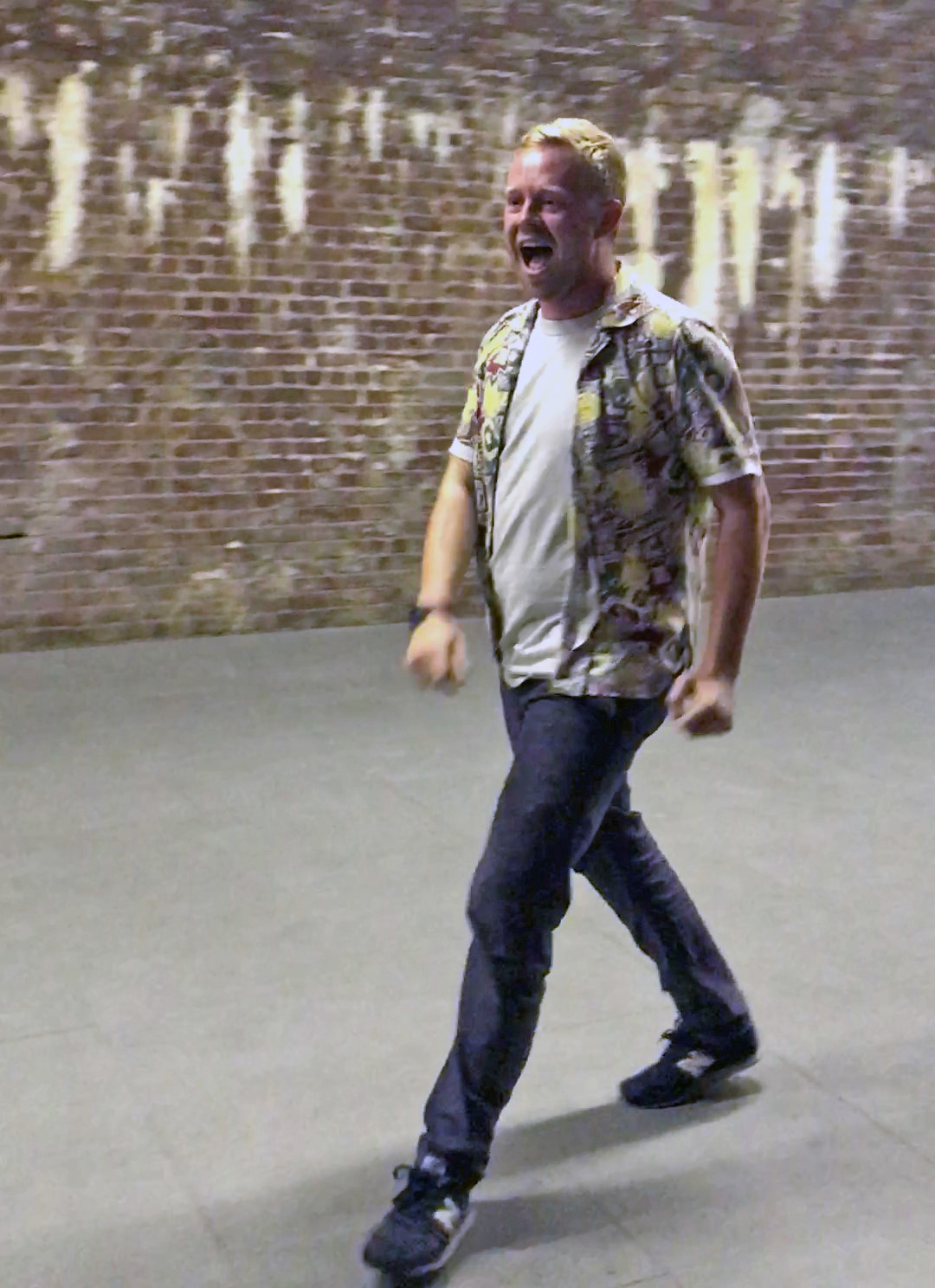
The final heteronym in this performance was Will Finch, played by Jack Pryor. It was a five-minute long monologue based on an adaptation of part of the script of the film Network (1976). He started the performance as a member of the audience, this to make the audience feel they were part of the performance. The increasingly crowded stage added to the feeling of being overwhelmed. Will’s monologue dealt with our tendency to avoid contact with each other in public. Our hiding device called phone, help us to accomplish this. His speech became louder and louder towards the end. During this performance Kees and Pasithea left the stage leaving Will and his shouting, representing our mobile devices shouting for our attention, by themselves.
Interview: Kees van Lankveld, Why counting cars (2018-2019)
Lisa Chang Lee is interviewing Kees van Lankveld about the reasoning behind his obsessive work Counting Cars (2010 - 2021).
In 2006, Kees decided to count cars. He determined the parameters beforehand and picked 249 different colours, different shades of five colours: red, orange, yellow, green and blue. To make the project manageable he chose to count the red shades on Mondays, the orange shades on Tuesday, the yellow shades on Wednesdays, the green shades on Thursdays and the blue shades on Fridays. In 2010 he started making different works showing the data he had collected from counting cars.
Kees: I like counting everything it makes me feel relaxed. So I was walking the same route to work everyday. I live in a small village in the Netherlands called Erp so after some thinking and trying to count different things, I like animals so started with counting cats but this didn’t really work it wasn’t very satisfying because I saw the same cats all the time. I moved on to counting birds but this was very difficult. You often didn’t see them but could hear them I discussed this with a forest ranger and he advised me to buy Pettersons field guide to birds and to listen to some bird sound recordings. But it didn’t work out in the end I was late at work quite a few times because it took me a lot of time to discover which bird I was looking at or was hearing. Then I thought why not count cars, my walk took me through the high street and I was walking around 8 to 830 so there was always some traffic.
Interview: Fred Robeson, project Jeroen van Dooren (2017)
The performance Fred Robeson (2017) investigates the role I am playing in regards to my heteronyms. It is the artist role which is being looked at. I see this artist role as one of my masks that I am wearing in real life. Together with my son-role, brother-role, friend-role etcetera all these masks together make a complete me. The artist role is divided into the artist called Jeroen van Dooren and all the heteronyms. In Fred Robeson (2017) Fred is talking about the artist Jeroen van Dooren. I wanted to become a fictive person myself to show the world me and my heteronyms are occupying. In the video performance Fred is describing how he created Jeroen to be able to make work which was not in line with his own practice. The creation of Jeroen, although Fred called him a heteronym, functioned more as a pseudonym. It was a political choice, in regards to his job as an architect, to invent him. The hiding behind the character so his employer wouldn’t know that he was making more experimental work. The work Fred Robeson (2017) was the first attempt of creating a world, of curating a world in which all the characters including the orthonym Jeroen van Dooren could communicate.
I am Juxtapositioning myself (2016)
In the experiment I am Juxtapositioning Myself I am trying to find the connection between me and my heteronyms. By using the term juxtaposition, an artworld favourite, as a verb I am trying to unite and at the same time differentiate, the different voices within me.
Agreement (2016)
In Agreement (2016), a performance I designed and organised for Luca Bosani, Jeroen van Dooren, Guildor, Alice Jacobs, Luli Perez, Despina Zacharopoulou. The 2-hour live performance was performed in ‘Me/You You/Me’, Sensei Gallery, London (2016) . The aim was for the performers to come in with a blank canvas and discuss in front of a live audience how you could organise two days of performances, which consequently would be performed over the following two days. I wanted to explore and make apparent the processes of thinking and curating that a performer goes through when organising an exhibition of performances. I was interested in the different roles the diverse performers would play in the making and organising of the performances. This performance was important not because of the result of the 2 days of performances, I knew the performers and their works, so it was pretty much what I expected. It was the conversation that took place. How could I have a similar conversation with my heteronyms?
Kees van Lankveld, presentation alphabetical order (2016)
In Presentation Alphabetical Order (2010-2019), a six-hour performance about Kees van Lankveld, I wanted to introduce biographical elements, talk about his work and show his obsessive behaviour. Kees starts out by describing who he is, where he was born, where he works. The performance moves on by explaining that he had a few failed attempts to count different things whilst walking to work: cats and birds, for example. He explains why they failed. Subsequently he explained how he came up with his idea for the work Counting Cars (2010-2019). The remaining four hours involves a repetitive performance in which he repeats a version of the following:
Week 16
17th of April 2006, it was a nice spring day
I left at one to eight and I arrived at thirty-one past eight at work
I counted one chestnut-coloured car
This was repeated 2988 times (twelve weeks times two hundred and forty-nine red shades). This is an indirect indication of Kees’ obsessive personality. He interacted with the audience in the first two hours to make sure everyone understood his project. From time to time these interactions became conversations about obsessions. Although it was advertised as being a performance by one of my – Jeroen van Dooren’s – fictional characters, the conversation was being held in our reality. The fictional character Kees had a real influence on audience members. Similarly, the audience had an influence on the fictional character Kees van Lankveld.
Discontinuous Rhythm (2014)
In Discontinuous Rhythm (2014), Kees van Lankveld, who has obsessive-compulsive disorder (OCD), is explaining his artwork Alphabetical Order (2010-2019). For this performance, I hired an actor to play the role of Jeroen van Dooren, playing the role of Kees van Lankveld. The actor wore a concealed earpiece which played a recording of the script of van Lankveld’s talk. In addition to ventriloquising the script, the actor was directed to begin the reading again each time a new member of the audience entered the room. As described below, this was in keeping with van Lankveld’s character, who has OCD and who wants everyone to hear the complete explanation of the work. By starting over and over again people already in the room kept hearing the same sentences. To van Lankveld’s frustration, he had to explain the work in its entirety each time someone arrived in the room: this refers to the frustration often felt by people with OCD. The performance is designed for the people in the room to feel this frustration as well, by having to listen to a repetition of the same part of a story.
Discontinuous rhythm excerpt
I am working since 2010 on my counting cars series; it’s a series of 25 A0 prints;
Red Alphabetical Order
Orange Alphabetical Order
Yellow Alphabetical Order
Green Alphabetical Order
Blue Alphabetical Order
Red RGB Code
Orange RGB Code
Yellow RGB Code
Green RGB Code
Blue RGB Code
Red CMYK Code
Orange CMYK Code
Yellow CMYK Code
Green CMYK Code
Blue CMYK Code
Red HSV Code
Orange HSV Code
Yellow HSV Code
Green HSV Code
Blue HSV Code
Red Hex Triplet
Orange Hex Triplet
Yellow Hex Triplet
Green Hex Triplet
Blue Hex Triplet
These 25 prints are schedules of how one should count and record different types and colours of cars while walking to work. The red cars will be counted on Mondays, Orange cars will be counted on Tuesdays, Yellow cars will be counted on Wednesdays, Green cars will be counted on Thursdays and Blue cars will be counted on Fridays. The different colours of counted cars will be catalogued according to 5 different models. The first model is Alphabetical order which will be counted in the weeks 1, 6, 11, 16, 21, 26, 31, 36, 41, 46 and 51. The second model, RGB Code, will be counted in the weeks 2, 7, 12, 17, 22, 27, 32, 37, 42, 47 and 52. The Third model will be ordered according to cmyk code in weeks 3, 8, 13, 18, 23, 28, 33, 38, 43 and 48. hsv code is the fourth model and will be counted in the weeks: 4, 9, 14, 19, 24, 29, 34, 39, 44 and 49. The last model hex triplet will be counted in the weeks 5, 10, 15, 20, 25, 30, 35, 40, 45 and 50. There will be 1225 A3 prints these prints will be the results of the counted cars. These include;
Alizarin Crimson Red Alphabetical Order Counted Cars
Amaranth Red Alphabetical Order Counted Cars
American Rose Red Alphabetical Order Counted Cars
Auburn Red Alphabetical Order Counted Cars
Burgundy Red Alphabetical Order Counted Cars
Burnt Sienna Alphabetical Order Counted Cars
Red Alphabetical Order Counted Cars
Candy Apple Red Red Alphabetical Order Counted Cars
Cardinal Red Alphabetical Order Counted Cars
Carmine Red Alphabetical Order Counted Cars
Carnelian Red Alphabetical Order Counted Cars
Cerise Red Alphabetical Order Counted Cars
Chestnut Red Alphabetical Order Counted Cars
Coquelicot Red Alphabetical Order Counted Cars
Coral Red Red Alphabetical Order Counted Cars
Crimson Red Alphabetical Order Counted Cars
Dark Red Red Alphabetical Order Counted Cars
Falu Red Red Alphabetical Order Counted Cars
Fire brick Red Alphabetical Order Counted Cars
Fire Engine Red Red Alphabetical Order Counted Cars
Flame Red Alphabetical Order Counted Cars
IndianRed Red Alphabetical Order Counted Cars
Lava Red Alphabetical Order Counted Cars
Lust Red Alphabetical Order Counted Cars
Maroon Red Alphabetical Order Counted Cars
Persian Red Red Alphabetical Order Counted Cars
Persimmon Red Alphabetical Order Counted Cars
Pigment Red Red Alphabetical Order Counted Cars
Raspberry Red Alphabetical Order Counted Cars
Red Red Alphabetical Order Counted Cars
Red-brown Red Alphabetical Order Counted Cars
Red-Violet Red Alphabetical Order Counted Cars
Redwood Red Alphabetical Order Counted Cars
Rose Red Alphabetical Order Counted Cars
Rose madder Red Alphabetical Order Counted Cars
Rosewood Red Alphabetical Order Counted Cars
Rosso corsa Red Alphabetical Order Counted Cars
Ruby Red Alphabetical Order Counted Cars
Rufous Red Alphabetical Order Counted Cars
Rust Red Alphabetical Order Counted Cars
Salmon Red Alphabetical Order Counted Cars
Sangria Red Alphabetical Order Counted Cars
Scarlet Red Alphabetical Order Counted Cars
Sinopia Red Alphabetical Order Counted Cars
Terracotta Red Alphabetical Order Counted Cars
Tomato Red Alphabetical Order Counted Cars
Tuscan red Red Alphabetical Order Counted Cars
Upsdell Red Red Alphabetical Order Counted Cars
Venetian Red Red Alphabetical Order Counted Cars
Vermilion Red Alphabetical Order Counted Cars
Amber Orange Alphabetical Order Counted Cars
Apricot Orange Alphabetical Order Counted Cars
Atomic Tangerine Orange Alphabetical Order Counted Cars
Bittersweet Orange Alphabetical Order Counted Cars
Bronze Orange Alphabetical Order Counted Cars
Burnt orange Orange Alphabetical Order Counted Cars
Cadmium Orange Orange Alphabetical Order Counted Cars
Carrot Orange Orange Alphabetical Order Counted Cars
Champagne Orange Alphabetical Order Counted Cars
Copper Orange Alphabetical Order Counted Cars
Coral Orange Alphabetical Order Counted Cars
Dark orange (Web Colour) Orange Alphabetical Order Counted Cars
Dark salmon Orange Alphabetical Order Counted Cars
Deep carrot orange Orange Alphabetical Order Counted Cars
Deep saffron Orange Alphabetical Order Counted Cars
Gamboge Orange Alphabetical Order Counted Cars
Gold Orange Alphabetical Order Counted Cars
International Orange Orange Alphabetical Order Counted Cars
Mahogony Orange Alphabetical Order Counted Cars
Mandarin Orange Orange Alphabetical Order Counted Cars
Matisse Orange Orange Alphabetical Order Counted Cars
Melon Orange Alphabetical Order Counted Cars
Ochre Orange Alphabetical Order, Counted Cars
Orange Orange Alphabetical Order Counted Cars
Orange Peel Orange Alphabetical Order Counted Cars
OrangeRed Orange Alphabetical Order Counted Cars
Orange (Web Colour) Orange Alphabetical Order Counted Cars
Pantone Orange Orange Alphabetical Order Counted Cars
Papaya Whip Orange Alphabetical Order Counted Cars
Pastel orange Orange Alphabetical Order Counted Cars
Peach Orange Alphabetical Order Counted Cars
Peach-Orange Orange Alphabetical Order Counted Cars
Peach-Yellow Orange Alphabetical Order Counted Cars
Persian Orange Orange Alphabetical Order Counted Cars
Peru Orange Alphabetical Order Counted Cars
Portland Orange Orange Alphabetical Order Counted Cars
Princeton Orange Orange Alphabetical Order Counted Cars
Pumpkin Orange Alphabetical Order Counted Cars
SAE/ECE Amber Orange Alphabetical Order Counted Cars
Safety Orange Orange Alphabetical Order Counted Cars
Strong Orange Orange Alphabetical Order Counted Cars
Sunset Orange Alphabetical Order Counted Cars
Tan Orange Alphabetical Order Counted Cars
Tangelo Orange Alphabetical Order Counted Cars
Tangerine Orange Alphabetical Order Counted Cars
Tea Rose Orange Alphabetical Order Counted Cars
Tenné Orange Alphabetical Order Counted Cars
Ubuntu Orange Orange Alphabetical Order Counted Cars
Vivid Orange Orange Alphabetical Order Counted Cars
Amber Yellow Alphabetical Order Counted Cars
Apricot Yellow Alphabetical Order Counted Cars
Aureolin Yellow Alphabetical Order Counted Cars
Banana Yellow Yellow Alphabetical Order Counted Cars
Beige Yellow Alphabetical Order Counted Cars
Buff Yellow Alphabetical Order Counted Cars
Cadmium Yellow Yellow Alphabetical Order Counted Cars
Canary Yellow Yellow Alphabetical Order Counted Cars
Chartreuse Yellow Yellow Alphabetical Order Counted Cars
Citrine Yellow Alphabetical Order Counted Cars
Cream Yellow Alphabetical Order Counted Cars
Cyber Yellow Yellow Alphabetical Order Counted Cars
Dark Goldenrod Yellow Alphabetical Order Counted Cars
Ecru Yellow Alphabetical Order Counted Cars
Gold Yellow Alphabetical Order Counted Cars
Goldenrod Yellow Alphabetical Order Counted Cars
JasmineYellow Alphabetical Order Counted Cars
Jonquil Yellow Alphabetical Order Counted Cars
Khaki Yellow Alphabetical Order Counted Cars
Lemon Yellow Alphabetical Order Counted Cars
Lemon Chiffon Yellow Alphabetical Order Counted Cars
Lemon Glacier Yellow Alphabetical Order Counted Cars
Light Goldenrod Yellow Alphabetical Order Counted Cars
Light Goldenrod Yellow Counted Cars
Yellow Alphabetical Order Counted Cars
Light Khaki Yellow Alphabetical Order Counted Cars
Light Yellow Yellow Alphabetical Order Counted Cars
Lion Yellow Alphabetical Order Counted Cars
Maize Yellow Alphabetical Order Counted Cars
Mellow Yellow Yellow Alphabetical Order Counted Cars
Metallic GoldYellow Alphabetical Order Counted Cars
Mikado Yellow Yellow Alphabetical Order Counted Cars
Mustard Yellow Alphabetical Order Counted Cars
Pastel YellowYellow Alphabetical Order Counted Cars
Royal Yellow Yellow Alphabetical Order Counted Cars
Safety Yellow Yellow Alphabetical Order Counted Cars
Saffron Yellow Alphabetical Order Counted Cars
School Bus Yellow Yellow Alphabetical Order Counted Cars
Selective Yellow Yellow Alphabetical Order Counted Cars
Stil De Grain Yellow Yellow Alphabetical Order Counted Cars
Straw Yellow Alphabetical Order Counted Cars
Sunglow Yellow Alphabetical Order Counted Cars
Titanium Yellow Yellow Alphabetical Order Counted Cars
Unmellow Yellow Yellow Alphabetical Order Counted Cars
Vanilla Yellow Alphabetical Order Counted Cars
Yellow Yellow Alphabetical Order Counted Cars
Yellow (crayola) Yellow Alphabetical Order Counted Cars
Yellow (munsell) Yellow Alphabetical Order Counted Cars
Yellow (ncs) Yellow Alphabetical Order Counted Cars
Yellow (pantone)Yellow Alphabetical Order Counted Cars
Apple Green Green Alphabetical Order Counted Cars
Asparagus Green Alphabetical Order Counted Cars
Bottle green Green Alphabetical Order Counted Cars
Bright Green Green Alphabetical Order Counted Cars
Caribbean Green Green Alphabetical Order Counted Cars
Chartreuse (web color) Green Alphabetical Order Counted Cars
Dark Olive Green Green Alphabetical Order Counted Cars
Dark Spring Green Green Alphabetical Order Counted Cars
Dartmouth green Green Alphabetical Order Counted Cars
Fern Green Alphabetical Order Counted Cars
Forest green (traditional) Green Alphabetical Order Counted Cars
Forest green (web) Green Alphabetical Order
Counted Cars, Green Green Alphabetical Order Counted Cars
Green-yellow Green Alphabetical Order Counted Cars
Harlequin Green Alphabetical Order Counted Cars
Hunter Green Green Order Counted Cars
India Green Green Alphabetical Order Counted Cars
Islamic Green Green Alphabetical Order Counted Cars
Jade Green Alphabetical Order Counted Cars
June bud Green Alphabetical Order Counted Cars
Jungle Green Green Alphabetical Order Counted Cars
Kelly Green Green Alphabetical Order Counted Cars
Lawn Green Green Alphabetical Order Counted Cars
Lime Green Green Alphabetical Order Counted Cars
Mantis Green Alphabetical Order Counted Cars
Midnight Green Green Alphabetical Order Counted Cars
Mint Leaf Green Alphabetical Order Counted Cars
MSU Green Green Alphabetical Order Counted Cars
Neon Green Green Alphabetical Order Counted Cars
Office Green Green Alphabetical Order Counted Cars
Olive Green Alphabetical Order Counted Cars
Olive Drab Green Alphabetical Order Counted Cars
Pakistan Green Green Alphabetical Order Counted Cars
Pale Green Green Alphabetical Order Counted Cars
Paris Green Green Alphabetical Order Counted Cars
Persian Green Green Alphabetical Order Counted Cars
Phthalo Green Green Alphabetical Order Counted Cars
Pine Green Green Alphabetical Order Counted Cars
Pistachio Green Alphabetical Order Counted Cars
Rifle Green Green Alphabetical Order Counted Cars
Sacramento State Green Green Alphabetical Order Counted Cars
Sap Green Green Alphabetical Order Counted Cars
Sea Green Green Alphabetical Order Counted Cars
Shamrock Green Green Alphabetical Order Counted Cars
Skobeloff Green Alphabetical Order Counted Cars
Spring Green Green Alphabetical Order Counted Cars
Tea Green Green Alphabetical Order Counted Cars
Teal Green Alphabetical Order Counted Cars
Tropical Rain forest Green Alphabetical Order Counted Cars
Aero Blue Blue Alphabetical Order Counted Cars
Air Force Blue Blue Alphabetical Order Counted Cars
Air superiority Blue Blue Alphabetical Order Counted Cars
Alice Blue Blue Alphabetical Order Counted Cars
Azure Baby Blue Blue Alphabetical Order Counted Cars
Blue Blue Alphabetical Order Counted Cars
Blueberry Blue Alphabetical Order Counted Cars
Blue-Gray Blue Alphabetical Order Counted Cars
Bondi Blue Blue Alphabetical Order Counted Cars
Brandeis Blue Blue Alphabetical Order Counted Cars
Carolina Blue Blue Alphabetical Order Counted Cars
Celeste Blue Alphabetical Order Counted Cars
Cerulean Blue Alphabetical Order Counted Cars
Cobalt Blue Blue Alphabetical Order Counted Cars
Columbia Blue Blue Alphabetical Order Counted Cars
Cornflower Blue Blue Alphabetical Order Counted Cars
Cyan Blue Alphabetical Order Counted Cars
Dark Blue Blue Alphabetical Order Counted Cars
Deep Sky Blue Blue Alphabetical Order Counted Cars
Denim Blue Alphabetical Order Counted Cars
Dodger Blue Blue Alphabetical Order Counted Cars
Duke Blue Blue Alphabetical Order Counted Cars
Egyptian Blue Blue Alphabetical Order Counted Cars
Electric Blue Blue Alphabetical Order Counted Cars
Electric Indigo Blue Alphabetical Order Counted Cars
Glaucous Blue Alphabetical Order Counted Cars
International Klein Blue Blue Alphabetical Order Counted Cars
Lavender Blue Blue Alphabetical Order Counted Cars
Little Boy Blue Blue Alphabetical Order Counted Cars
Maya Blue Blue Alphabetical Order Counted Cars
Medium Blue Blue Alphabetical Order Counted Cars
Midnight Blue Blue Alphabetical Order Counted Cars
Navy Blue Blue Alphabetical Order Counted Cars
Non-Photo Blue Blue Alphabetical Order Counted Cars
Oxford Blue Blue Alphabetical Order Counted Cars
Persian Blue Blue Alphabetical Order Counted Cars
Picton Blue Blue Alphabetical Order Counted Cars
Powder Blue Blue Alphabetical Order Counted Cars
Prussian Blue Blue Alphabetical Order Counted Cars
Royal Blue Blue Alphabetical Order Counted Cars
Sapphire Blue Alphabetical Order Counted Cars
Sky Blue Blue Alphabetical Order Counted Cars
Steel Blue Blue Alphabetical Order Counted Cars
Tiffany Blue Blue Alphabetical Order Counted Cars
True Blue Blue Alphabetical Order Counted Cars
Tufts Blue Blue Alphabetical Order Counted Cars
Usafa Blue Blue Alphabetical Order Counted Cars
Vivid Sky Blue Blue Alphabetical Order Counted Cars
Are the first 245 of the counted cars prints. These first 245 prints are the results of the cars counted in weeks 1, 6, 11, 16, 21, 26, 31, 36, 41, 46 and 51 and are catalogued in Alphabetical order.
Fred Robeson, Biography before he became an artist (2014)
In the audio work Fred Robeson Biography Before he Became an Artist (2014) the narrator tells the audience about Fred’s history before he became an artist. It is the first experiment with the character Fred Robeson in finding a voice and method of portraying a character.
Aaron hazan from hotel radio interviewing tom singer (2013)
In Tom Singer’s; Aaron Hazan, from Hotel Radio interview with Tom Singer (2013), Aaron is interviewing Tom, and through the narrative of the conversation Aaron explains what kind of environment Tom lives in. He tries to persuade Tom to tell him why he is living in these conditions, but he gets no direct answer. The interview is an indirect characterisation of Tom. Through the interview the listener gets an idea of who Tom is without having any direct description of what kind of person he is.
I regret to inform you that......(2010)
I started to let the audience in, in I Regret to Inform You That… (2010), a selection of rejection letters on A4 paper: the letters were addressed to different heteronyms and myself, Jeroen van Dooren. The rejection letters were the first work in which I stopped hiding and became open about my relation to the heteronyms.
zelfportret (2004)
The first work I made that involved me talking about my personality seen through the eyes of others was Zelfportret (2004). Over a period of seventy-seven consecutive days I captured a series of pictures of my friends, family and colleagues, appearing as though they were taking what is now called a selfie (Zelfportret). Their arms extended towards and beyond the lens as if they were pressing the shutter, but in actual fact it was me – framing and shooting these apparent self-portraits. The series was a diary of people I met and places I went to on those seventy-seven days. The number seventy-seven was significant to this series, as 1977 is also the year of my birth.
